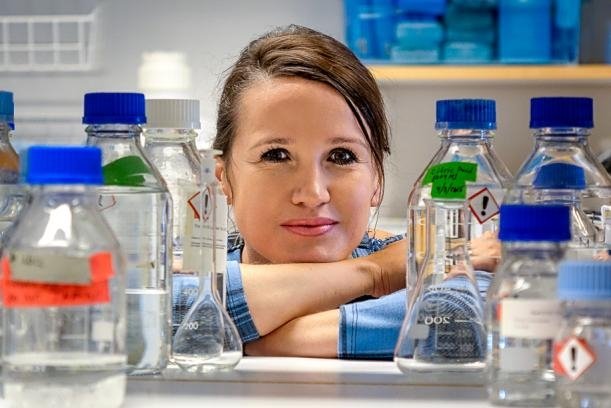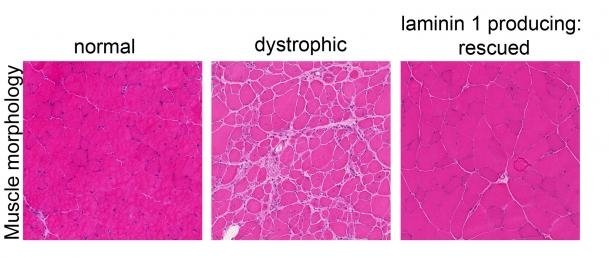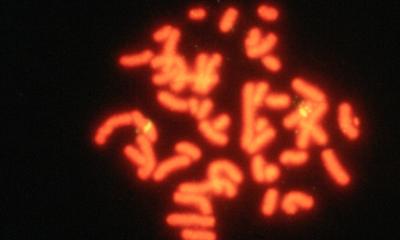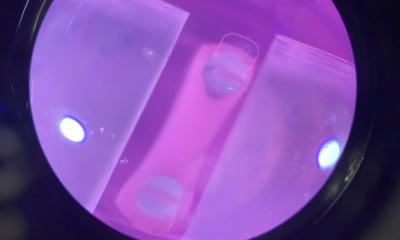
Photo: Agata Garpenlind
News • CRISPR-Cas vs MDC1A
Undoing the damage of muscle dystrophy
A new technology has brought researchers one step closer to a future cure for Congenital Muscular Dystrophy type1A, a devastating muscle disease that affects children.
The new findings are based on research by Kinga Gawlik at Lund University, Department of Experimental Medical Science, and were recently published in Nature.
Congenital Muscular Dystrophy type1A, MDC1A, a progressive genetic disease that causes muscle wasting, affects one in 30 000 newborns. Sick children lose their ability to walk, move and breathe properly. Current treatments can only slow the disease's progression, but do not provide cure. In 2002 Kinga Gawlik started her Phd project at EMV on this devastating muscle disease, caused by a lack of laminin-α2, which is naturally produced in the muscle. Supervised and guided by professor Madeleine Durbeej-Hjalt, her aim was to upregulate the protein laminin-α1 which is very similar to laminin-α2 but normally not produced in the muscle, in mice that suffer from the disease.

Photo: Kinga Gawlik
This new promising Crispr-Cas9 system might, in the future, be implemented in humans and also be useful in finding a cure for other diseases
Kinga Gawlik
The upregulation worked. The laminin-α1 protein normalised the muscle mass in the dystrophic mice and their health status improved dramatically. The so called ‘rescued’ mice were now able to live almost normal lives, up until two years of age, the normal life span of a mouse. This in contrast to the sick mice, not producing laminin-α1 who died at age of three to four weeks.
Kinga Gawlik's article was published in 2004. Even though the results were sensational, the procedures couldn't be performed in humans because her approach involved genetic manipulation of the mouse embryos. It is not possible to manipulate human embryos in a similar way. But now a group of Canadian researchers, led by Ronald Cohn, might have found a better method. Using an elegantly modified so called Crispr-Cas9 technique they explored better possibilities of MDC1A prevention in mice. They applied the same concept: laminin-α1 upregulation, but importantly that technique might be feasible in humans. What makes this technique applicable in human patients is that small molecules that target a gene of interest can be easily packed into special carriers and injected into blood of patients.
Injections of the Crispr-Cas9 system designed in Cohn's lab into both muscle and blood of three-week-old dystrophic mice that already show symptoms have significantly improved their condition. Laminin-α1 was produced at high levels, muscle morphology and muscle function was greatly improved and other associated symptoms were largely corrected. "Ronald Cohn is an absolutely brilliant researcher who picks up on everything new. He is also a medical doctor and head of the Hospital for Sick Children Research Institute. We really appreciate that we collaborated on this project", says Kinga Gawlik, when we meet up in her lab at BMC. "Collaboration between scientists is a key to better research. What we published in 2004 was confirmed earlier this year in Cohn's lab. This new promising Crispr-Cas9 system might, in the future, be implemented in humans and also be useful in finding a cure for other diseases".
Gawlik's thoughts on the new findings:
So, does this mean that there will soon be a cure?
There's still a lot of research to be done. Injecting gene modifiers into humans is connected with big risks, for example the risk of activating another gene, which can be very dangerous. It must be carefully validated that Crispr-Cas9 will target only the gene of interest. It's pure speculation on my part, but if the method is verified on many different levels and safety controlled, maybe we'll see a cure in 20-30 years.
Your work has the potential to affect peoples lives.
Yes, I think that's something that drives every researcher. It gives satisfaction and extra motivation.
How does it feel that your findings were confirmed?
I'm very happy, especially since this was my first and ‘favorite’ publication. I definitely feel very proud that someone got interested in this and that it works in such a fancy setup and gives some future perspectives for patients. I also think it's very important not to neglect rare diseases. Today there is so much focus on common disorders like cancer and diabetes. For us that work with less frequent diseases it's more difficult to draw attention to our projects and secure fundings.
What does this mean for you as a scientist?
Hopefully it will be easier for me to secure fundings for future projects and for young scientists that would work with me.
Source: Lund University
11.09.2019











